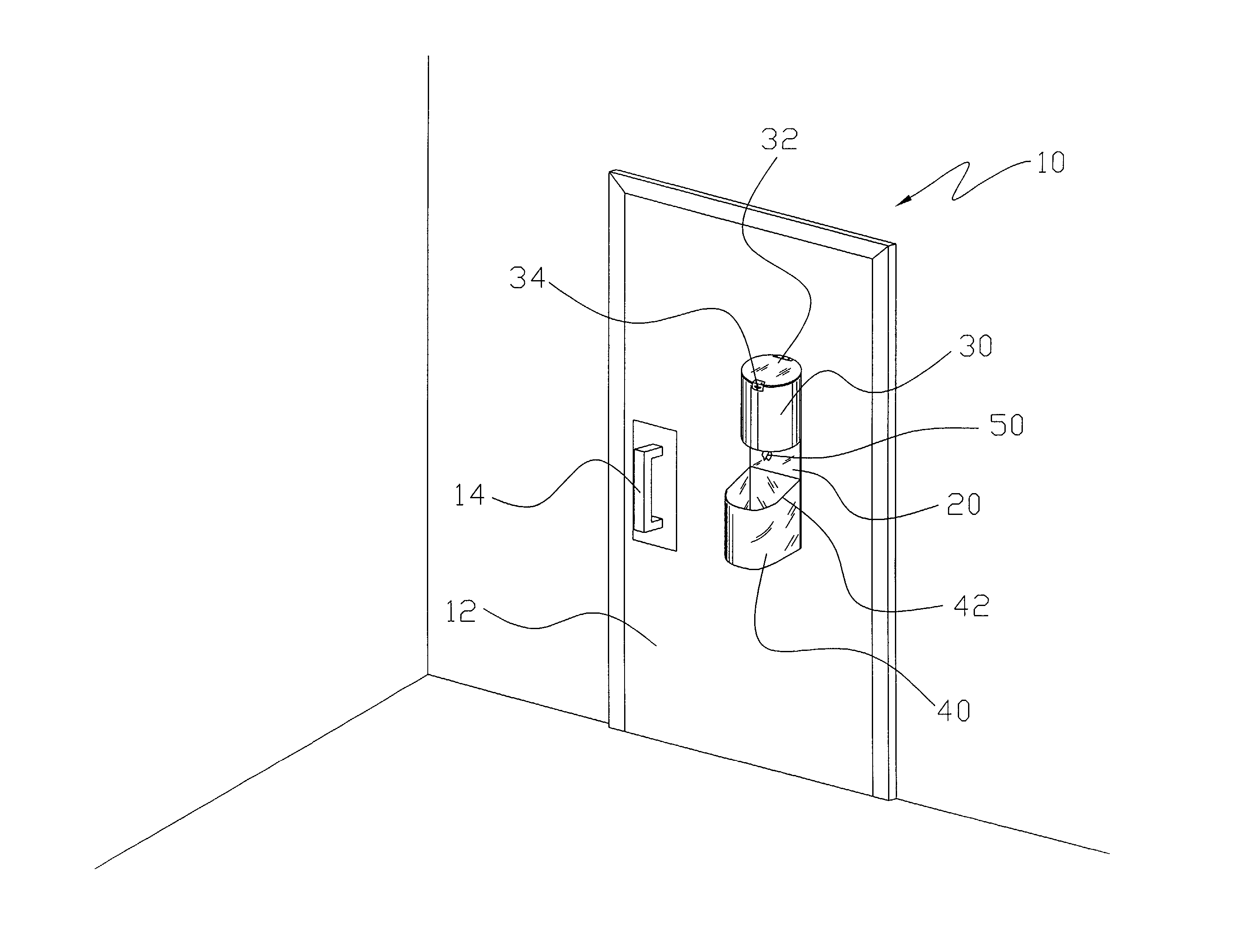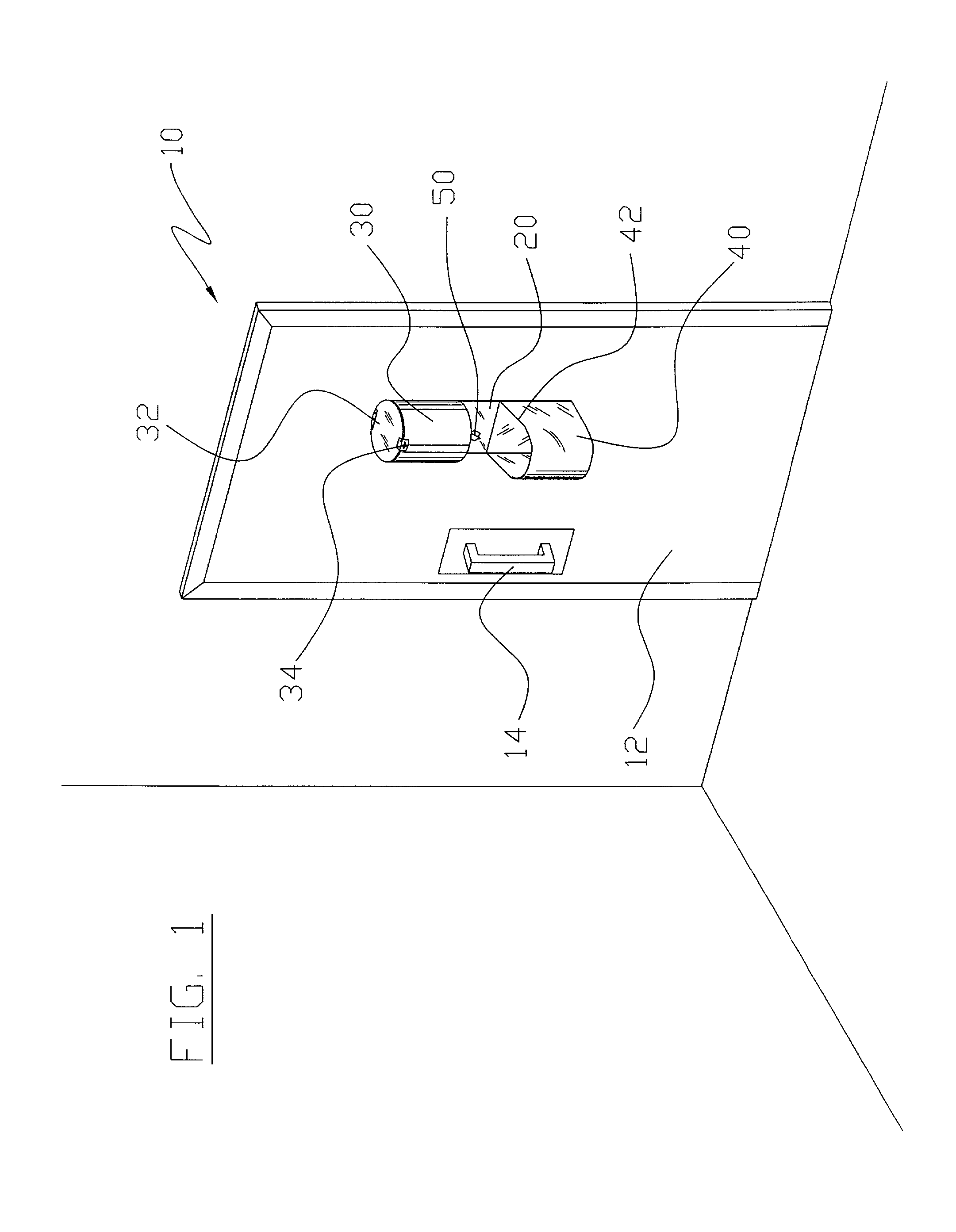Door sanitation system
a sanitation system and door technology, applied in the field of sanitation systems, can solve the problems of allowing time for inadvertent infection of diseases, affecting the health of people, and not being convenient to use, and being unsuitable for reducing the transmission of potentially harmful organisms and viruses
- Summary
- Abstract
- Description
- Claims
- Application Information
AI Technical Summary
Benefits of technology
Problems solved by technology
Method used
Image
Examples
Embodiment Construction
[0036] Turning now descriptively to the drawings, in which similar reference characters denote similar elements throughout the several views, FIGS. 1 through 6 illustrate a door sanitation system 10, which comprises a base 20, a dispenser 30 attached to the base 20 for receiving a supply 52 of towels 50, and a trash receptacle 40 attached to the base 20. The towels 50 within the dispenser 30 are preferably saturated with a disinfecting solution. When preparing to leave a room through a door 12 such as a restroom, the user removes at least one towel 50 from the dispenser 30 and positions the towel 50 within the inner portion of their hand. The user then engages a portion of the door 12 with their hand having the towel 50 positioned in between thereof. As the towel 50 engages the portion of the door 12 such as a door 12 handle 14, the disinfecting solution disinfects the surface of organisms, bacteria, and viruses. After the door 12 is opened, the user then deposits the towel 50 withi...
PUM
| Property | Measurement | Unit |
|---|---|---|
| transmission | aaaaa | aaaaa |
| volume | aaaaa | aaaaa |
| physical structure | aaaaa | aaaaa |
Abstract
Description
Claims
Application Information
 Login to View More
Login to View More - R&D
- Intellectual Property
- Life Sciences
- Materials
- Tech Scout
- Unparalleled Data Quality
- Higher Quality Content
- 60% Fewer Hallucinations
Browse by: Latest US Patents, China's latest patents, Technical Efficacy Thesaurus, Application Domain, Technology Topic, Popular Technical Reports.
© 2025 PatSnap. All rights reserved.Legal|Privacy policy|Modern Slavery Act Transparency Statement|Sitemap|About US| Contact US: help@patsnap.com



